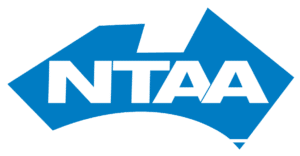
Under the legislation of SUPERANNUATION INDUSTRY (SUPERVISION) ACT 1993, the trustee of a self-managed superannuation fund (SMSF) is not allowed from intentionally acquiring residential property from a related party of the fund, unless it is acquiring a business real property.
How to define a business real property?
As per ATO guidance – SMSFR 2009/1, property that is considered ‘Business Real Property’ can be acquired from a related party.
Business real property must:
- Be real property
- Any freehold or leasehold interest.
- Any interest of the entity in Crown land, other than a leasehold interest, being an interest that is capable of assignment or transfer.
- A demountable placed on land would not qualify as it is not real property in its own right.
- If a structure is not a permanent part of the land, it is not real property in the true sense.
- Does not include items such as plant, machinery, motor vehicles, etc.
- Satisfy the “business use test”
- Wholly and exclusively used in one or more businesses to the exclusion of other types of use.
The term “wholly and exclusively” means:
-
-
- Used to an appreciable degree.
- Minor part of property may not be used at all.
-
- There are a few exceptions where a residential portion of the property is required for the business to sufficiently run, therefore, the property will still be considered business real property.
Examples:
-
- Motels, Boarding houses & B&B.
- Farms With up to 2 hectares of residential land.
The definition of a “related party” is not restricted to individuals; it is in fact, much more far-reaching than that. Section 10 of the SIS Act specifies a related party to be any of the following:
- A member of the fund
- A standard employer-sponsor of the fund
- A Part 8 associate of an entity referred to in either of the above
Many clients may not have doubts in regards to a member or a standard employer-sponsor of the fund, except part 8 associate of an individual. A part 8 associate of a member is of the following:
- A relative including but not limited to children, spouse, parents and lineal descendant;
- Other members of the SMSF;
- For a single member SMSF, any other trustee, or director of a corporate trustee;
- A business partner to the SMSF
- Spouse or child of the business partner
- A trustee of trust where the member controls the trust
- A company with major voting interest is held by the member or any other Part 8 associate of the member.
Can residential property be defined as Business Real Property?
In short answer, yes, but it is in limited circumstances as referred to the following example.
Mr Wood owns 20 residential units that are leased to long-term residents. Mr Wood manages and maintains the flats on a full-time basis living on the income generated from the leases. The units are not mortgaged. Mr Wood would like his SMSF to acquire some of the units rather than sell the units to a non-related party. The scale of the operation together with the elements of repetition and purpose indicate that Mr Wood is carrying on a property investment business. Even though the tenants use the properties for their own private or domestic purposes, this use remains incidental and relevant to Mr Wood’s property investment business. Consequently, Mr Wood’s interest in the property on which the units are built is business real property. Provided the acquisition takes place at market value, the units may be acquired by the SMSF without contravening the related party asset acquisition rule in section 66 SIS Act 1993.
Key Take Away
A business real property is a real property that is actively used in a business. Receiving rental income from an investment property is likely a form of receiving passive income. However, Mr Wood’s business scale is a vital factor to prove that he is carrying on a business.
In addition, SMSF is a special investment vehicle and is not supposed to carry on a business, it is important to consult SMSF specialists before you make investment decisions.
For any technical questions, or to find out about how our services can support your investment, please contact our team.
ATO Guidance:
SMSFR 2009/1: Self Managed Superannuation Funds Ruling
SMSFR 2010/1: Self Managed Superannuation Funds Ruling
This information has been prepared without taking into account your objectives, financial situation or needs. Because of this, you should, before acting on this information, consider its appropriateness, having regard to your objectives, financial situation or needs.




